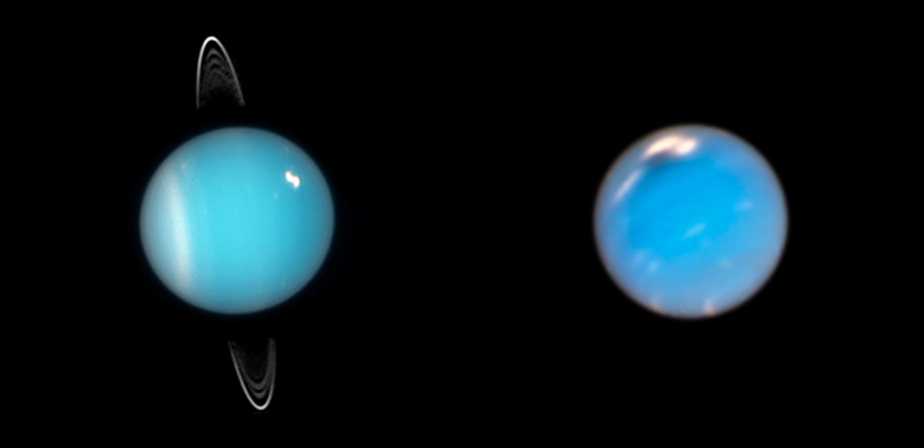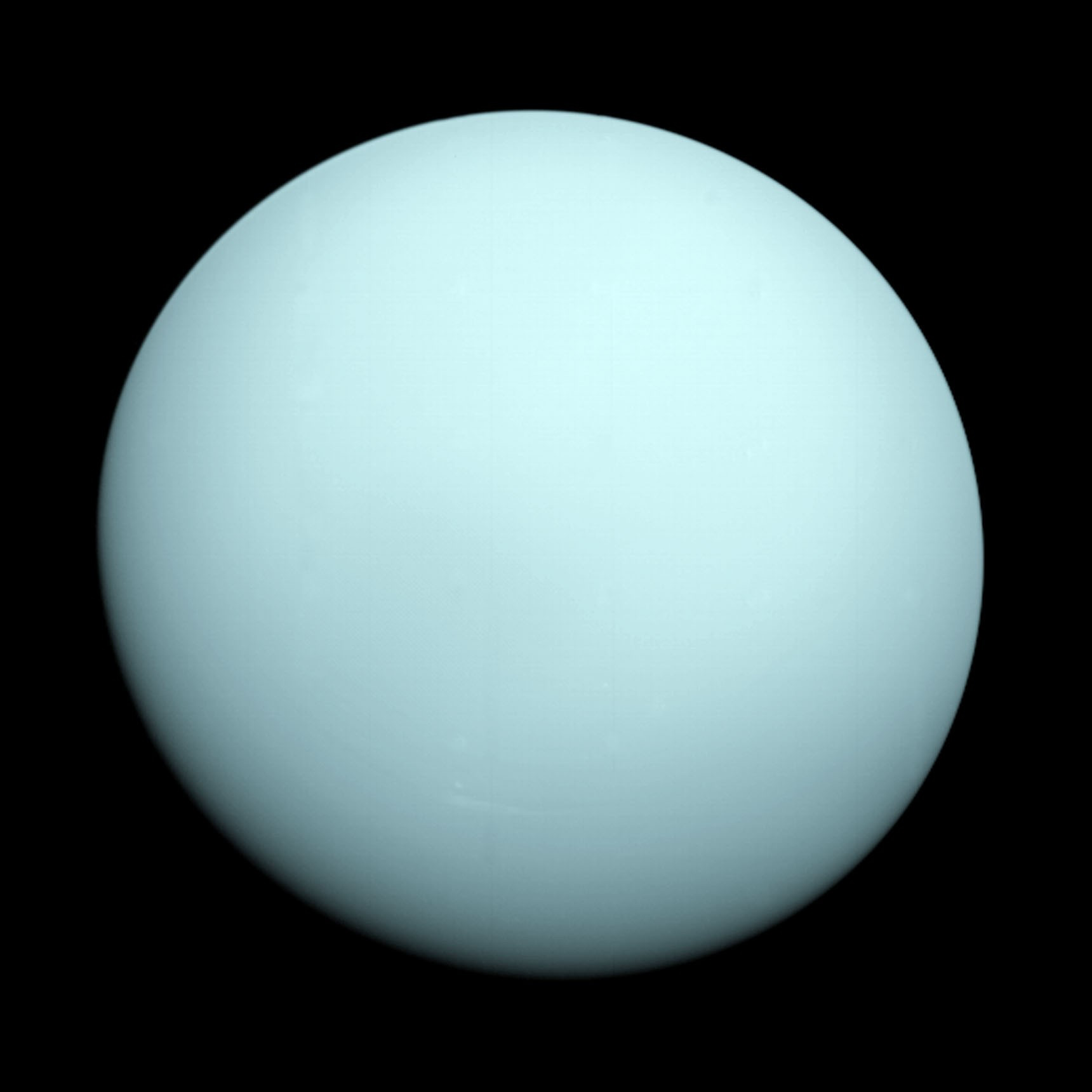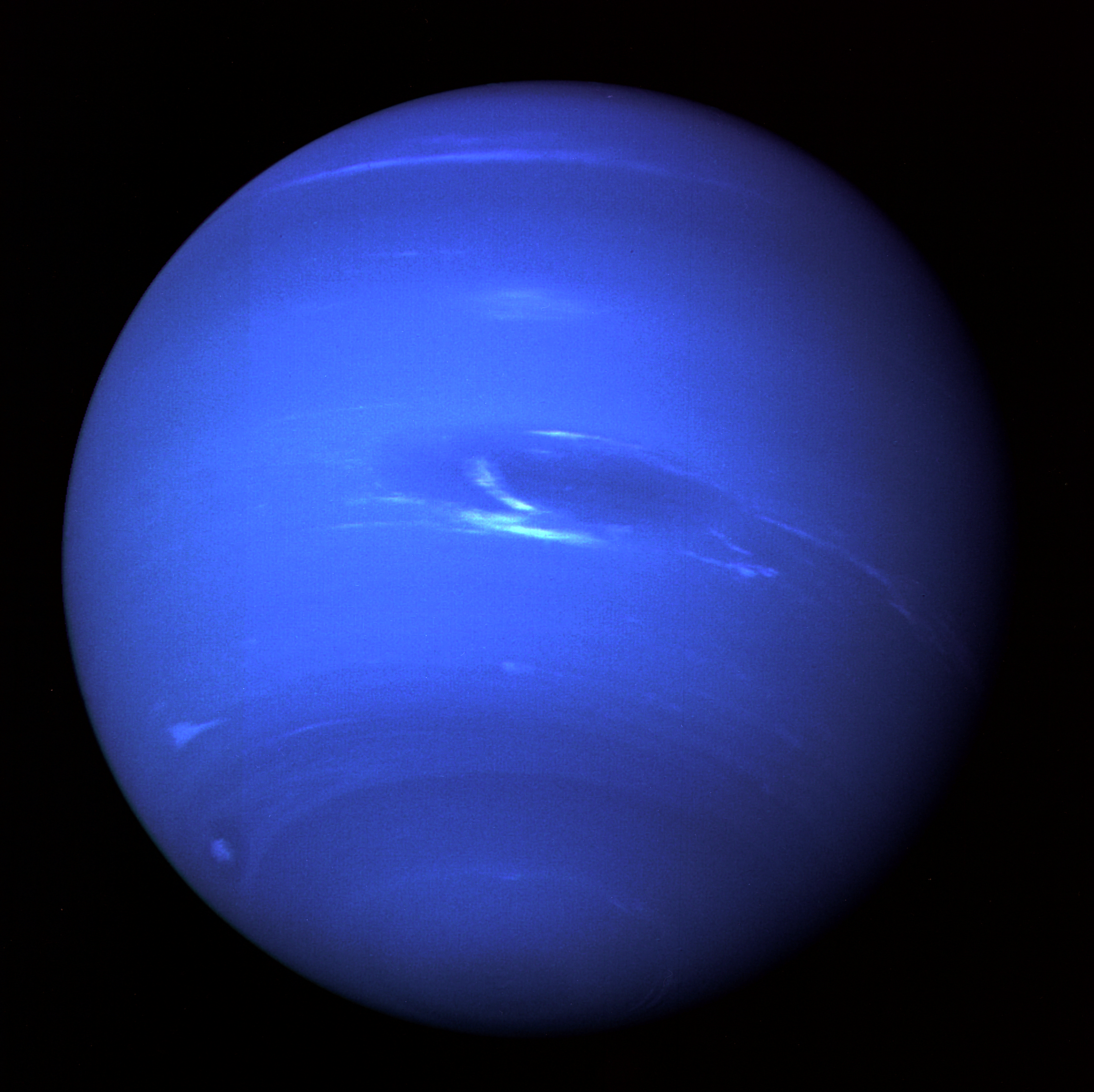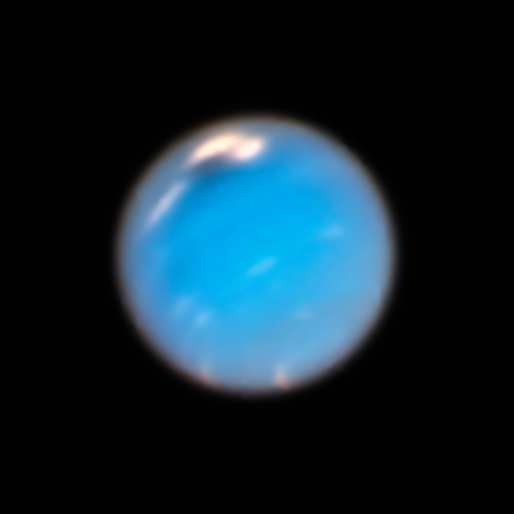1 min read
Two Faces of Uranus (Hubble)
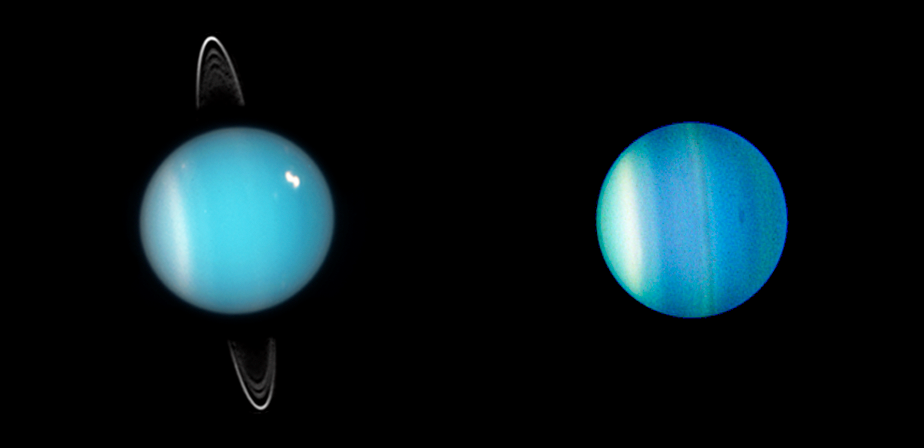
These Hubble Space Telescope images show the varied faces of Uranus. On the left, Uranus in 2005 displays its ring system. The planet — along with its rings and moons — is tipped on its side, rotating at roughly a 90-degree angle from the plane of its orbit. In the Hubble close-up taken just one year later, Uranus reveals its banded structure and a mysterious dark storm.
About the Data
- Data DescriptionData DescriptionProposal: A description of the observations, their scientific justification, and the links to the data available in the science archive.
Science Team: The astronomers who planned the observations and analyzed the data. "PI" refers to the Principal Investigator. - InstrumentInstrumentThe science instrument used to produce the data.ACS/WFC
- Exposure DatesExposure DatesThe date(s) that the telescope made its observations and the total exposure time.August 2005 and August 23, 2006
- FiltersFiltersThe camera filters that were used in the science observations.Left: Clear, F330W, F475W, F606W, F814W Right: F550M, F658N, and F775W
- Object NameObject NameA name or catalog number that astronomers use to identify an astronomical object.Uranus
- Object DescriptionObject DescriptionThe type of astronomical object.Uranus with rings and bands of gas
- Release DateFebruary 26, 2020
- Science ReleaseExamining Ice Giants with NASA’s Webb Telescope
- CreditImage: NASA, ESA, Mark Showalter (SETI Institute), Lawrence Sromovsky (UW-Madison), Patrick Fry (UW-Madison), Heidi Hammel (SSI), Kathy Rages (SETI Institute)

These images are a composite of separate exposures acquired by the ACS instrument on the Hubble Space Telescope. Several filters were used to sample specific wavelength ranges. The color results from assigning different hues (colors) to each monochromatic (grayscale) image associated with an individual filter. In this case, the assigned colors are: Left: Blue: F330W Green: F475W Orange: F606W Red: F814W Right: Blue: F550M Green: F658N Red: F775W
Related Images & Videos
Share
Details
Laura Betz
NASA’s Goddard Space Flight Center
Greenbelt, Maryland
laura.e.betz@nasa.gov
NASA, ESA, Mark Showalter (SETI Institute), Lawrence Sromovsky (UW-Madison), Patrick Fry (UW-Madison), Heidi Hammel (SSI), Kathy Rages (SETI Institute)




























